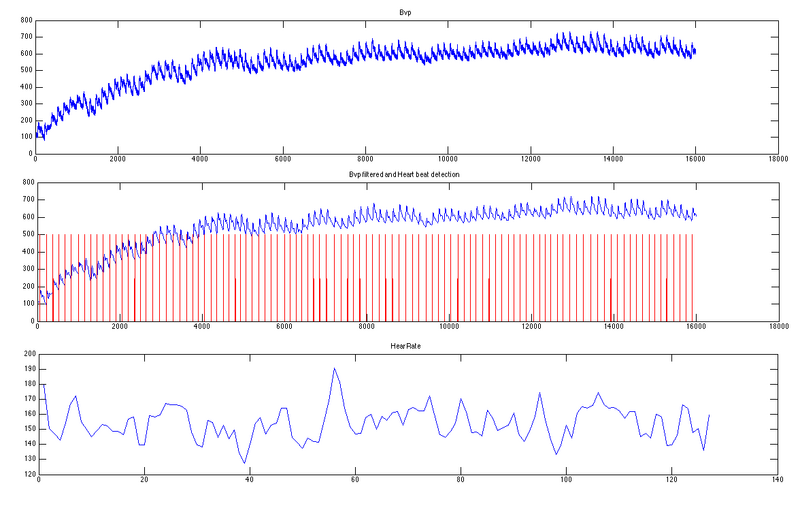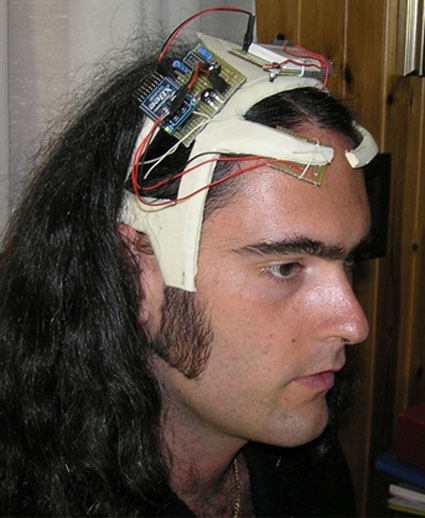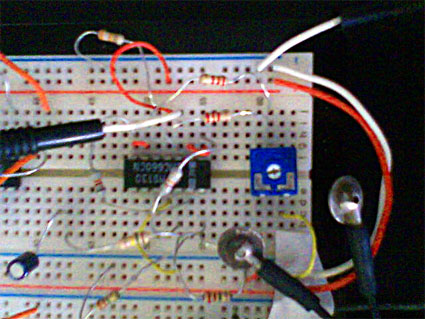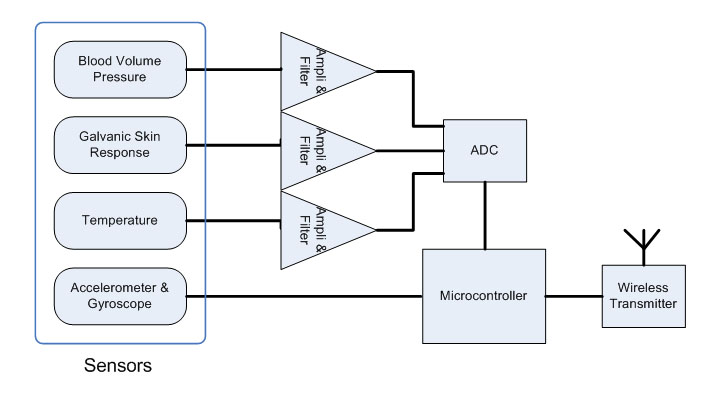Difference between revisions of "Wireless Affective Devices"
PaoloVilla (Talk | contribs) |
PaoloVilla (Talk | contribs) |
||
| Line 45: | Line 45: | ||
* Use of mechanical tools. Standard safety measures described in [http://airlab.elet.polimi.it/index.php/airlab/content/download/461/4110/file/documento_valutazione_rischi_AIRLab.pdf Safety norms] will be followed. | * Use of mechanical tools. Standard safety measures described in [http://airlab.elet.polimi.it/index.php/airlab/content/download/461/4110/file/documento_valutazione_rischi_AIRLab.pdf Safety norms] will be followed. | ||
* Use of soldering iron. Standard safety measures described in [http://airlab.elet.polimi.it/index.php/airlab/content/download/461/4110/file/documento_valutazione_rischi_AIRLab.pdf Safety norms] will be followed. | * Use of soldering iron. Standard safety measures described in [http://airlab.elet.polimi.it/index.php/airlab/content/download/461/4110/file/documento_valutazione_rischi_AIRLab.pdf Safety norms] will be followed. | ||
| − | * Use of high-voltage circuits. Special gloves and a current limiter will be used. | + | * Use of high-voltage circuits. Special gloves and a current limiter will be used.Standard safety measures described in [http://airlab.elet.polimi.it/index.php/airlab/content/download/461/4110/file/documento_valutazione_rischi_AIRLab.pdf Safety norms] will be followed. |
| − | == '''Part 2: project description''' == | + | |
| + | == '''Part 2: introduction (why we want do this)''' == | ||
| + | |||
| + | Research on Human-Computer-Interfaces has recently begun to take into account the affective state of the user. By appropriately reacting to the affective user state, interfaces could not only become more pleasant or entertaining, but also more effective or safer. | ||
| + | It is known that affective states have bodily correlates, and thus physiological signals could provide the necessary information for acquiring the affective user state. In contrast to other sources of information about the affective user state such as speech or facial expression, most physiological signals are not under voluntary control, and thus cannot be masked up to the same extent. Furthermore, it can be presumed that the signs of affective states in physiological signals are less dependent on individual and contextual factors: this is because the signals correspond to internal physiology, largely related to the autonomous nervous and limbic systems, rather than to external expressions that can be manipulated easily. | ||
| + | Recently, the issue of emotion regulation drew interests from several fields including neuroscience, psychology, education, computer science, etc. Possible applications are e-learningin, human computer interaction, development of communicative technologies for use by people with autism, car infotainment system, lie detection tests, cognitive workload, multimodal user interfaces MMUI (allow users to control computers using speech and gesture), etc. | ||
| + | |||
| + | |||
| + | == '''Part 3: project description''' == | ||
The project is aimed at developing a device, connected to a PC, to acquire biological signals (such as GSR, BVP, Temperature and Head orientation) in a way that is less invasive for the subject. The term invasive is related to how much the sensors we use compromise the normal interaction between subject and machine. | The project is aimed at developing a device, connected to a PC, to acquire biological signals (such as GSR, BVP, Temperature and Head orientation) in a way that is less invasive for the subject. The term invasive is related to how much the sensors we use compromise the normal interaction between subject and machine. | ||
| Line 56: | Line 64: | ||
It is composed by: | It is composed by: | ||
| − | * Blood Volume Pressure | + | * Blood Volume Pressure Sensor (Preliminary release by Mattia Colombo) |
| − | * Galvanic Skin Response (Preliminary release by Sala Mirko e Alessia Cornaggia) | + | * Galvanic Skin Response Sensor (Preliminary release by Sala Mirko e Alessia Cornaggia) |
| − | * Temperature | + | * Temperature Sensor |
| − | * Accelerometer | + | * 3 Way Accelerometer |
| − | * Gyroscope | + | * 3 Way Gyroscope |
* Wireless comunication with a PC | * Wireless comunication with a PC | ||
* Low power, high efficiency, battery power section | * Low power, high efficiency, battery power section | ||
| − | == '''Part | + | Galvanic Skin Response (GSR), also known as electrodermal activity (EDA), is very popular in psychophysiological studies since Carl Jung and his students (1907) described it as a mean to |
| + | enter the “sea of the unconscious” because “every stimulus accompanied by an emotion produced a deviation of the galvanometer” directly proportional to the strength of the emotion aroused. Eccrine sweat glands are intimately involved in EDA because they are concentrated in the palms of the hands and the soles of the feet and respond primarily to “psychic” stimulation, from the Sympathetic Nervous System (SNS), rather than ambient temperature changes. | ||
| + | |||
| + | The cardiovascular system is in charge to keep us alive by maintaining the vital blood flow throughout the body, providing nutrients and oxygen to our cells. The SNS controls this system | ||
| + | by shifting the flow in response to exercise, temperature,postural and emotional changes. Blood Volume Pulse (BVP) is the most common measure of vasomotor activity because it reflects the phasic pumping of the heart, the vasodilation of vessels that changes in the amount of acral blood delivered. In our instrumentation setup we measured this variable through photoplethysmography, which shines light against the skin and measures how much is reflected to a photo transducer. | ||
| + | |||
| + | The temperatures of peripheral limbs vary as a consequence of changes in blood flow. In our instrumentation setup Skin Temperature variations are measured through a solid-state | ||
| + | temperature transducer attached to the skin of the subject. | ||
| + | |||
| + | |||
| + | == '''Part 3.1: just done in preliminary release''' == | ||
Here is a preliminary release of the headset produced before 2008/08/08 | Here is a preliminary release of the headset produced before 2008/08/08 | ||
| Line 85: | Line 103: | ||
[[Image:circuito.jpg]] | [[Image:circuito.jpg]] | ||
| − | |||
| − | This is a simplified schematic block diagram of the complete | + | == '''Part 3.2: re-definition of the complete work''' == |
| + | |||
| + | This is a simplified schematic block diagram of the complete instrumentation setup: | ||
[[Image:WADSchematicDiagram.jpg]] | [[Image:WADSchematicDiagram.jpg]] | ||
| Line 99: | Line 118: | ||
* Wireless section could be implemeted in Bluetooth (instead of using a XBee module like in preliminary release) due to it's diffusion in cellular phones, notebooks, MP3 reader... without necessity of external modules. | * Wireless section could be implemeted in Bluetooth (instead of using a XBee module like in preliminary release) due to it's diffusion in cellular phones, notebooks, MP3 reader... without necessity of external modules. | ||
| + | |||
| + | Sensors are an important part of an Affective Computing System because they provide information about the wearer's physical state or behavior. They can gather data in a continuous way without having to interrupt the user. | ||
About Sensors: | About Sensors: | ||
| − | BVP will be acquire by an IR transmitter-receiver measuring light reflected from skin. Particular attention will be put on position, geometry and power absorption of this stage. | + | - BVP will be acquire by an IR transmitter-receiver measuring light reflected from skin (photoplethysmography). Particular attention will be put on position, geometry and power absorption of this stage. |
| − | GSR will be acquiret by a couple of electrodes forcing a low current (or voltage) and reading voltage (or current) through electrodes. Particular attention will be put on electrodes position and material. In addition is possible to foresee some problems in amplifier stage due to large range of skin resistance. Problem consist in chosing a correct amplification to overwork ADC full scale with a signal affected by little variation but huge possible range. | + | - GSR will be acquiret by a couple of electrodes forcing a low current (or voltage) and reading voltage (or current) through electrodes. Particular attention will be put on electrodes position and material. In addition is possible to foresee some problems in amplifier stage due to large range of skin resistance. Problem consist in chosing a correct amplification to overwork ADC full scale with a signal affected by little variation but huge possible range. |
| − | Temperature will be acquired by thermocouple or PTC/NTC. Slowly variable signal, possible problems with noise due to resolution required. | + | - Temperature will be acquired by thermocouple or PTC/NTC. Slowly variable signal, possible problems with noise due to resolution required. |
| − | Head orientation will be acquired by an accelerometer and a gyroscope, problably integrated in the same chip. Two possibilities: analog output (need to digitalize up to six line) or digital output (like displaied in schematic block diagram). | + | - Head orientation will be acquired by an accelerometer and a gyroscope, problably integrated in the same chip. Two possibilities: analog output (need to digitalize up to six line) or digital output (like displaied in schematic block diagram). |
To define in detail electronic specifications and requirements it's necessary a preliminary research/study (in literature and web) about state of art of sensor type used to monitor each type of biological signals we are interested about. | To define in detail electronic specifications and requirements it's necessary a preliminary research/study (in literature and web) about state of art of sensor type used to monitor each type of biological signals we are interested about. | ||
In this way it's possible both understand problematics related to interaction between biological and electonical worlds and improve or re-desig existing prototype. | In this way it's possible both understand problematics related to interaction between biological and electonical worlds and improve or re-desig existing prototype. | ||
Revision as of 10:48, 17 November 2008
Contents
Part 1: project profile
Project name
Wireless Affective Devices (before 2008/10/30 only Affective Device)
Project short description
This project aims the development of devices for biological signals acquisition that can be used for Affective computing applications.
Dates
Start date: 2008/01/08
Preliminary release end: 2008/08/08
End date: Unknown (WIP)
Internet site(s)
People involved
Project heads
Other Politecnico di Milano people
Students currently working on the project
Students that have worked on the project
- Mattia Colombo (Blood Volume Pressure sensor)
- Alessia Cornaggia (Galvanic skin response sensor)
- Sala Mirko (Galvanic skin response sensor)
Laboratory work and risk analysis
Laboratory work for this project will be mainly performed at AIRLab/Lambrate. It will include electrical and electronic activity. Potentially risky activities are the following:
- Use of mechanical tools. Standard safety measures described in Safety norms will be followed.
- Use of soldering iron. Standard safety measures described in Safety norms will be followed.
- Use of high-voltage circuits. Special gloves and a current limiter will be used.Standard safety measures described in Safety norms will be followed.
Part 2: introduction (why we want do this)
Research on Human-Computer-Interfaces has recently begun to take into account the affective state of the user. By appropriately reacting to the affective user state, interfaces could not only become more pleasant or entertaining, but also more effective or safer. It is known that affective states have bodily correlates, and thus physiological signals could provide the necessary information for acquiring the affective user state. In contrast to other sources of information about the affective user state such as speech or facial expression, most physiological signals are not under voluntary control, and thus cannot be masked up to the same extent. Furthermore, it can be presumed that the signs of affective states in physiological signals are less dependent on individual and contextual factors: this is because the signals correspond to internal physiology, largely related to the autonomous nervous and limbic systems, rather than to external expressions that can be manipulated easily. Recently, the issue of emotion regulation drew interests from several fields including neuroscience, psychology, education, computer science, etc. Possible applications are e-learningin, human computer interaction, development of communicative technologies for use by people with autism, car infotainment system, lie detection tests, cognitive workload, multimodal user interfaces MMUI (allow users to control computers using speech and gesture), etc.
Part 3: project description
The project is aimed at developing a device, connected to a PC, to acquire biological signals (such as GSR, BVP, Temperature and Head orientation) in a way that is less invasive for the subject. The term invasive is related to how much the sensors we use compromise the normal interaction between subject and machine. Through these biological signal the PC is able o understand emotion in people who wear the device.
An affective device should be weared easily, should not have cables and should acquire as much sensors as possible. We relax some constraint on the quality of signal but we add constraint on way they are acquired(i.e. the subject can put it on easily, the usual movements are not influenced..). The aim of the resulting device is not to replace the standard medical devices usually used to acquire that signals, but is to be much more suitable for industrial application in which the medical requirement are replaced by invasivity requirement.
It is composed by:
- Blood Volume Pressure Sensor (Preliminary release by Mattia Colombo)
- Galvanic Skin Response Sensor (Preliminary release by Sala Mirko e Alessia Cornaggia)
- Temperature Sensor
- 3 Way Accelerometer
- 3 Way Gyroscope
- Wireless comunication with a PC
- Low power, high efficiency, battery power section
Galvanic Skin Response (GSR), also known as electrodermal activity (EDA), is very popular in psychophysiological studies since Carl Jung and his students (1907) described it as a mean to enter the “sea of the unconscious” because “every stimulus accompanied by an emotion produced a deviation of the galvanometer” directly proportional to the strength of the emotion aroused. Eccrine sweat glands are intimately involved in EDA because they are concentrated in the palms of the hands and the soles of the feet and respond primarily to “psychic” stimulation, from the Sympathetic Nervous System (SNS), rather than ambient temperature changes.
The cardiovascular system is in charge to keep us alive by maintaining the vital blood flow throughout the body, providing nutrients and oxygen to our cells. The SNS controls this system by shifting the flow in response to exercise, temperature,postural and emotional changes. Blood Volume Pulse (BVP) is the most common measure of vasomotor activity because it reflects the phasic pumping of the heart, the vasodilation of vessels that changes in the amount of acral blood delivered. In our instrumentation setup we measured this variable through photoplethysmography, which shines light against the skin and measures how much is reflected to a photo transducer.
The temperatures of peripheral limbs vary as a consequence of changes in blood flow. In our instrumentation setup Skin Temperature variations are measured through a solid-state temperature transducer attached to the skin of the subject.
Part 3.1: just done in preliminary release
Here is a preliminary release of the headset produced before 2008/08/08
If you are interested on the making of the headset please see making rubber models
* Blood Volume pressure
First graph showing a signal acquired with the wireless sensor.

* Skin galvanic response (Sala Mirko e Alessia Cornaggia[1]) Galvanic skin response (GSR), also known as electrodermal response (EDR), psychogalvanic reflex (PGR), or skin conductance response (SCR), is a method of measuring the electrical resistance of the skin. There is a relationship between sympathetic activity and emotional arousal, although one cannot identify the specific emotion being elicited. The GSR is highly sensitive to emotions in some people. Fear, anger, startle response, orienting response and sexual feelings are all among the emotions which may produce similar GSR responses. Response of the skin to the passage of a small electric current. The ease with which the current flows between two points on the skin can be used to indicate stress. When a person is tense or emotional, the sweat glands become more active, increasing moisture on the skin; this allows the electric current to flow more readily. The response may also be used in relaxation training: information about the galvanic skin response is fed back aurally or visually to the subject who can, with practice, learn to increase or decrease sweating on the skin by learning to relax or tense muscles. We measure the galvanic skin response using two electrodes attached to the skin. The optimal placement is the palm of the hands, but we are experimenting other places like on the forehead. The circuit we are creating is the one below.
Part 3.2: re-definition of the complete work
This is a simplified schematic block diagram of the complete instrumentation setup:
NOTE:
- In schematic is not present Power Supply Module: it will be based on a rechargeable Li-ion battery. It must satisfy requirements of high efficiency, logn life and low weight.
- ADC and Microcontroller could be unified using a microcontroller with internal ADC and internal or external multiplexer to select lines.
- Wireless section could be implemeted in Bluetooth (instead of using a XBee module like in preliminary release) due to it's diffusion in cellular phones, notebooks, MP3 reader... without necessity of external modules.
Sensors are an important part of an Affective Computing System because they provide information about the wearer's physical state or behavior. They can gather data in a continuous way without having to interrupt the user.
About Sensors:
- BVP will be acquire by an IR transmitter-receiver measuring light reflected from skin (photoplethysmography). Particular attention will be put on position, geometry and power absorption of this stage.
- GSR will be acquiret by a couple of electrodes forcing a low current (or voltage) and reading voltage (or current) through electrodes. Particular attention will be put on electrodes position and material. In addition is possible to foresee some problems in amplifier stage due to large range of skin resistance. Problem consist in chosing a correct amplification to overwork ADC full scale with a signal affected by little variation but huge possible range.
- Temperature will be acquired by thermocouple or PTC/NTC. Slowly variable signal, possible problems with noise due to resolution required.
- Head orientation will be acquired by an accelerometer and a gyroscope, problably integrated in the same chip. Two possibilities: analog output (need to digitalize up to six line) or digital output (like displaied in schematic block diagram).
To define in detail electronic specifications and requirements it's necessary a preliminary research/study (in literature and web) about state of art of sensor type used to monitor each type of biological signals we are interested about.
In this way it's possible both understand problematics related to interaction between biological and electonical worlds and improve or re-desig existing prototype.


